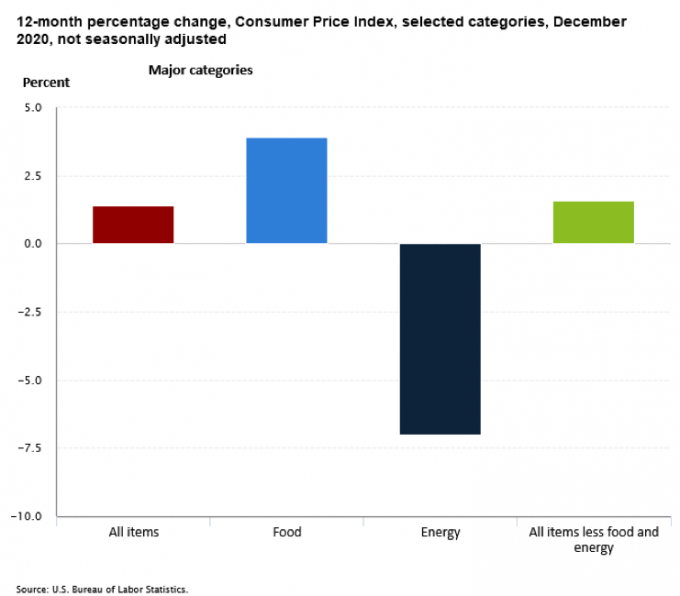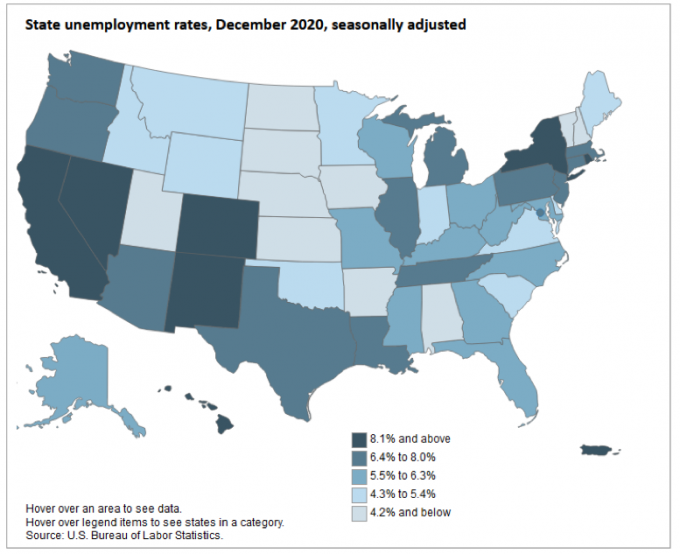Valorie Rice, Senior Business Information Specialist
Current data releases as of 29 January 2021
The number of bankruptcy filings in Arizona dropped in 2020 after small increases over the previous three years. There were 3,337 fewer bankruptcies in 2020 compared to 2019, a decrease of 20.6 percent. All forms of bankruptcy were lower in 2020 with Chapter 13 filings (individual debt adjustment) declining by 38.2 percent. Bankruptcies decreased the most for the Tucson office, going down 25.5 percent followed by a decrease of 19.4 percent for the Phoenix office and a decrease of 11.7 percent for the Yuma office. The Tucson office handles Cochise, Graham, Greenlee, Pima, Pinal, and Santa Cruz counties, each of which had fewer bankruptcies than the year before. The Phoenix office includes Apache, Coconino, Gila, Maricopa, Navajo, and Yavapai counties, with Maricopa posting the largest number of bankruptcies for the year as well as the largest decrease in the number of bankruptcies from the year before. The Yuma office represents La Paz, Mohave, and Yuma counties. Mohave had three more filings than the year before and the other two counties experienced decreased filings.
The Consumer Price Index increased 0.4 percent in December on a seasonally adjusted basis according to the January 13 Bureau of Labor Statistics release. Gasoline prices accounted for a large portion of the rise in the overall price index. The food index increased 0.4 percent for the month with both food at home and food away from home reporting increases. All items less food and energy rose 0.1 percent. The annual inflation rate was 1.4 percent for December. Though energy prices rose over the month, they were lower December-to-December, as depicted in Figure 1, decreasing 7.0 percent over the year while food prices rose 3.9 percent for the year.
Figure 1.

Job growth in Arizona was down 2.7 percent over-the-year in December before seasonal adjustment. Employment for Arizona metro areas were as follows: Sierra Vista-Douglas and Prescott both at -0.3 percent, Phoenix -2.3 percent, Tucson -3.4 percent, Lake Havasu-Kingman -3.8 percent, Yuma -7.6 percent, and Flagstaff -15.1 percent. Trade, transportation, and utilities was the only sector with over-the-year gains in employment for the state. The seasonally adjusted unemployment rate for Arizona moved down to 7.5 percent in December compared to 8.0 percent in November according to the January 21 Office of Economic Opportunity press release.
Arizona posted a seasonally adjusted unemployment rate of 7.5 percent in December, 3.0 percentage points higher than it had been in December 2019. There were seven states (plus Puerto Rico) with unemployment rates higher than 8 percent, as shown in Figure 2. Hawaii topped the nation with 9.3 percent unemployment for December followed by Nevada with 9.2 percent. South Dakota and Nebraska had the lowest unemployment rates for the month, both at 3.0 percent. South Dakota was the only state to have a statistically significant decrease in unemployment compared to December 2019 according to a January 26 Bureau of Labor Statistics state employment and unemployment release. The largest increase over the year happened in Hawaii, which added 6.6 percentage points compared to December 2019.
Figure 2.

Phoenix house prices gained 13.8 percent over-the-year in November, placing in the top spot out of all metropolitan areas in the S&P CoreLogic Case-Shiller Index for the 18th consecutive month. Price increases in the West dominated as Seattle (up 12.7 percent) and San Diego (up 12.3 percent) rounded out the top three metros. The January 26 release noted that all 19 cities reporting for November had higher price increases than the previous month (Detroit data were excluded). Las Vegas had the smallest increase of 6.8 percent. House prices in the national index increased 9.5 percent over-the-year in November compared to 8.4 percent increase in October. The 20-city composite increased 9.1 percent.
Women owned about 19.9 percent of employer businesses in the U.S. during 2018 according to new data from the U.S. Census Bureau Annual Business Survey (ABS). This was about the same in Arizona, as women owned 19.8 percent of businesses in the state. The ABS includes only businesses with paid employees (employer businesses). Other data from the survey indicates 5.8 percent of businesses in the U.S. and 7.2 percent in Arizona were Hispanic-owned. There were 7,155 veteran-owned businesses in Arizona in 2018, making up 6.7 percent of total, which was slightly higher than the nation at 5.9 percent.





